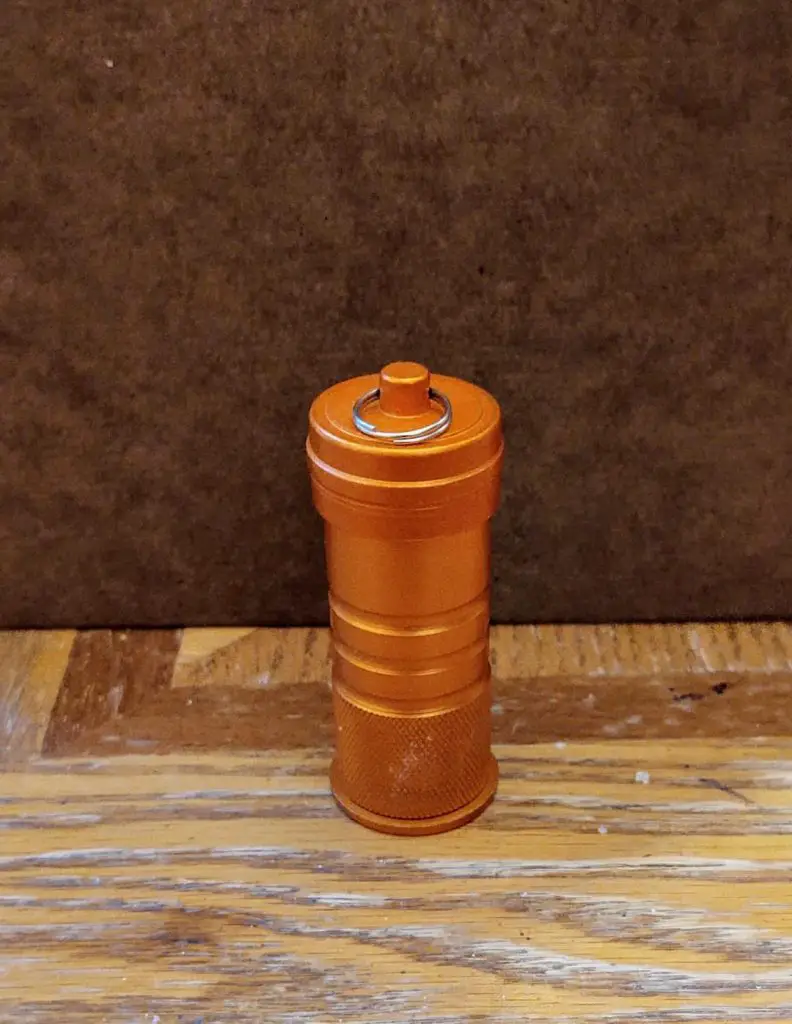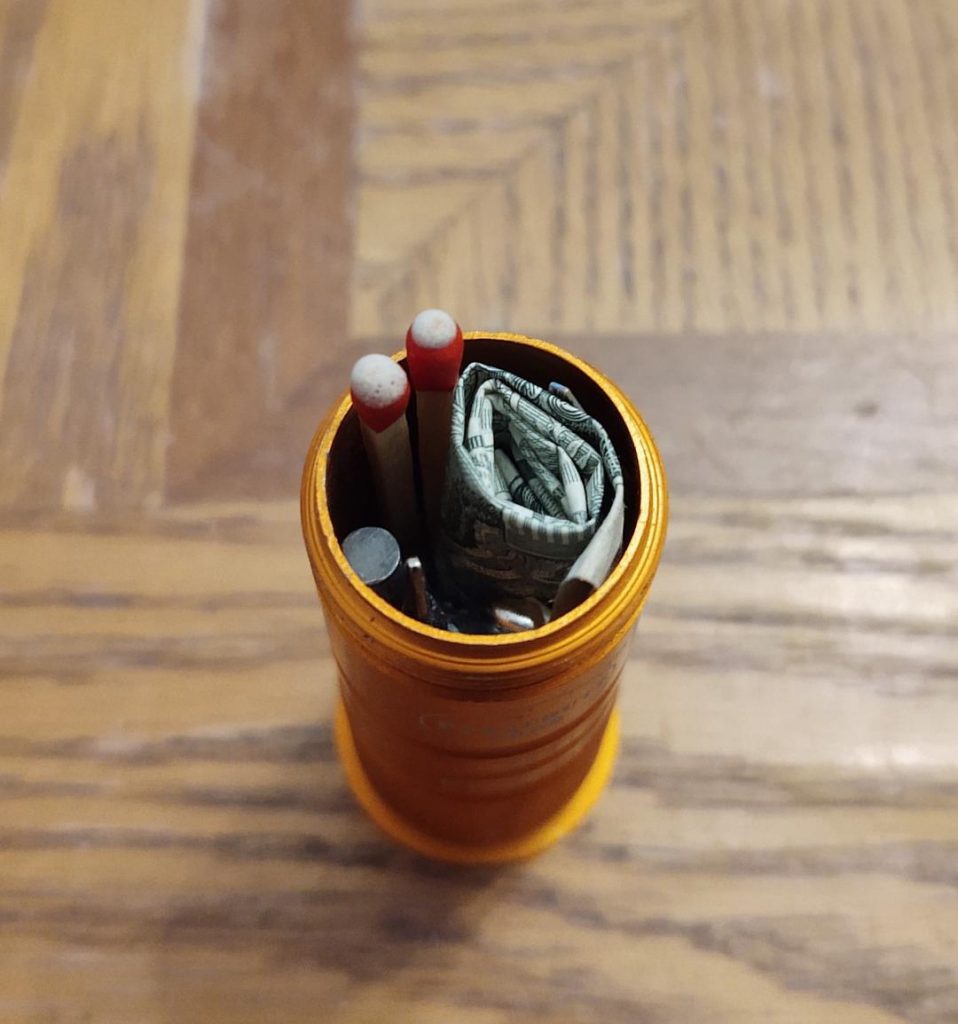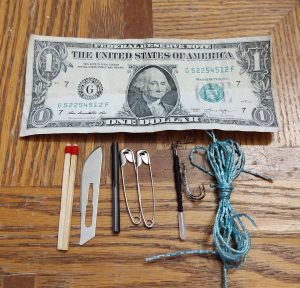Survival kits can come in all shapes and sizes and can contain a few items in them or have everything including the kitchen sink jammed within.
One of the fun things ( I am easily entertained) about survival kits, is that you can make them, however, best suits you and your needs. While there are a few basic items that are in most kits, there is no one set design you must follow. In this guide, I will cover how to put together a survival keychain kit that can come in handy in emergency situations.
SKIP AHEAD
Pros and Cons of a Survival Keychain
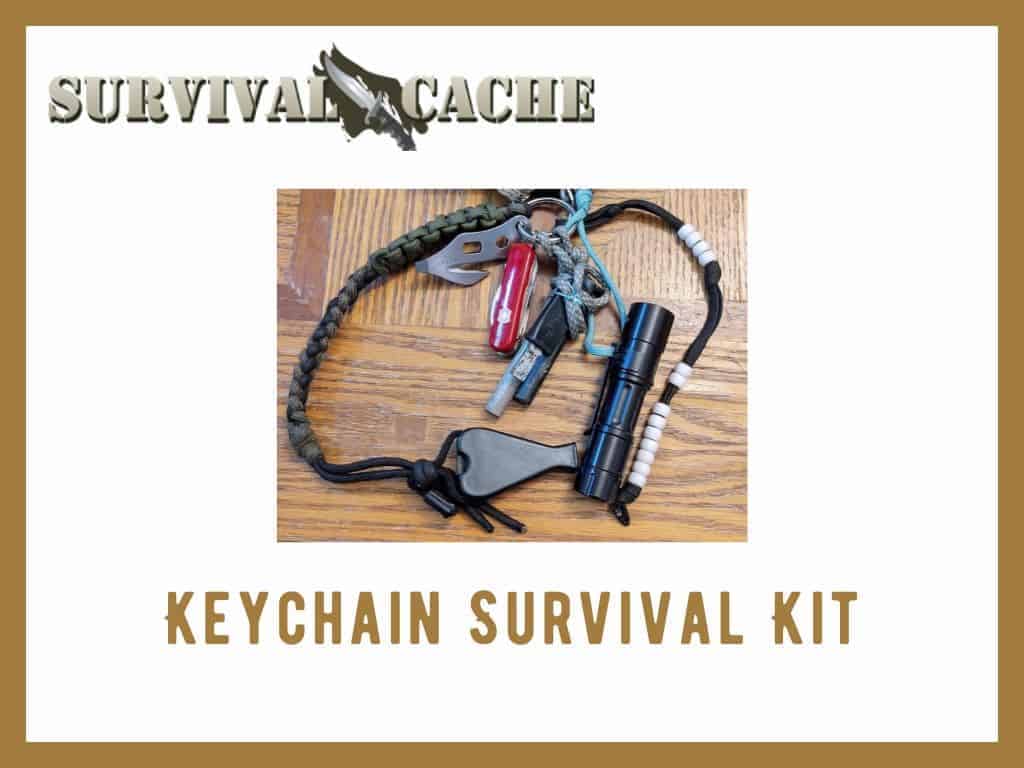
I often think about the phrase, “less is more.” With large survival kits, it is easy to become overwhelmed financially trying to fill them and figuring out how to constantly haul them around. That is why in this article I am going to discuss how to make a keychain survival kit.
Survival keychains have their pros and cons, and well, I’ll just go ahead and list them instead of droning on through a paragraph or two.
Pros
- Affordable
- Lightweight
- Compact
- Easy to transport and gives the ability to always have a few basics on hand
- Discreet
- Customizable
Cons
- Some kits are one-time use kits. This is especially true of paracord kits where paracord is braided around the items ( I will talk a little more about this later on)
- Given the size of the kit, the number of items available is extremely limited. This is the largest pitfall of these types of kits. But it is better to have some supplies than no supplies.
Simplest Keychain Kit
If you are not concerned with having the kit contained in anything, there is one very simple keychain design. There are a lot of different gear options available that can be hooked directly onto a keyring. With this design, items are directly attached to the keyring and allowed to hang loosely.
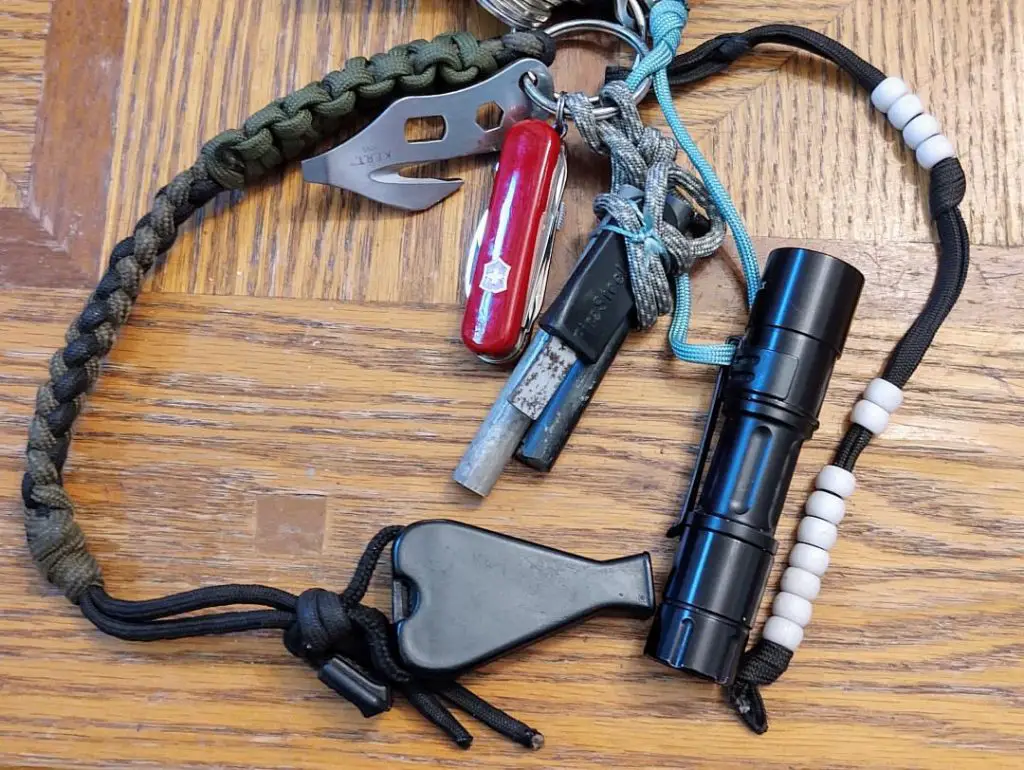
I like this design because it allows for immediate access to the items that I need and requires no container. Another perk is that I can carry larger variants of items that would otherwise need to be smaller or items that would not fit into the kit at all. Examples, instead of a small scalpel blade I can carry a Swiss Army Knife. Instead of a “toothpick” sized ferrocerium rod, I can carry a larger one that will be easier to handle and has less potential to break.
The downside to this design is that items are “loose” and they can weigh down a keychain. I have carried items like this around before and it can become a bit cumbersome. The items can be jumbled around and can become hung up on clothing or other articles.
Above is a picture of one such option. On the keychain in the picture is several feet of paracord, a JetScream whistle, K.E.R.T. (Keyring emergency rescue tool) by CRKT, Ferrocerium, and magnesium rod, flashlight, and pace count beads.
Designing The Kit
However, having items contained in a kit can be easier. There are two ways in which you can approach making any kit. The first is to figure out what items you want to go inside. The second is to decide what to put those items in, i.e. a container and how to carry it.
You can approach the kit any way you want but since this is a keychain survival kit, size and weight are going to be the limiting factors. So, for fun, I am going to figure out the container first and then decide what is going to go in it.
Container Options
When it comes to finding a container, you are only limited by your imagination. I try to find containers that are hard, waterproof, and allow quick access to the items inside. I have made my own by recycling a medication bottle, made one out of PVC pipe, or a pill container that can be purchased through most survival supply stores.
Below is a small pill container that I purchased a while back. It originally came with a rubber o-ring around the cap that helped to waterproof the container, but at some point, I tore it and haven’t gotten around to replacing it. It measures roughly two- and one-half inches tall by about one inch wide.
Here is a list of items I was able to put inside.
- Emergency cash (a denomination larger than $1 would probably be more helpful)
- Two, strike-anywhere matches
- Scalpel blade. Make sure that the blade is wrapped
- Ferrocerium rod
- Two clothespins
- Large sewing needle
- 10ft black sewing thread wrapped around the needle
- Two fishing hooks
- 10ft fishing line wrapped around the hooks
- 6ft Paracord yarns
This is just one configuration of items I have put in this container. Other options that fit inside include:
- Water purification tablets
- 30 feet of fishing line
- Pieces of fatwood
- A few small bandages
There is one item in this kit that I wanted to briefly discuss, and that item is the scalpel blade. I am not a big fan of adding these into small kits. I get it, it is a space saver and it is incredibly sharp. But in my opinion, without a handle, they are impractical and unsafe. I merely put it in the kit to show that it fits and it could be used as a last-ditch cutting tool.
Paracord Survival Keychain Kits
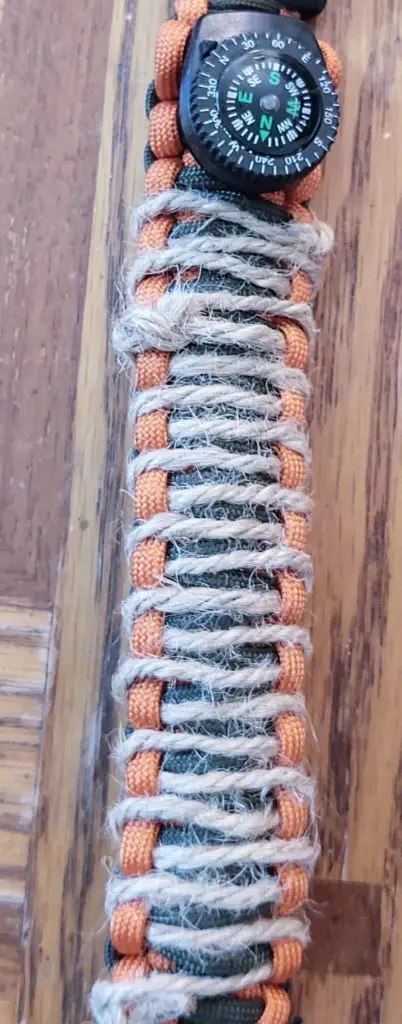
I have long been a fan of paracord and there have been a ton of amazing projects made from it over the years. Using it to make a keychain kit is beneficial because it acts like a kit to contain all the items and paracord itself is an extremely versatile survival item to have.
One of the simplest paracord braids that I know is called the Cobra Weave. It is not hard to learn and several different projects can be made from this one braid. If you do not know how to make this braid there are many good videos online with step by step instructions. Here are some items that I choose to put into this paracord keychain kit.
- Small Swiss Army Knife
- Sewing needle with ten foot of thread
- 30 ft of fishing line
- 5 fishing hooks
- Ferrocerium rod
- Jute Twine (tinder)
- Button compass
- Signal whistle
- A small sheet of aluminum foil
Which One Is The Best?
In the past, I have been asked which kit is the best option, and my reply is a combination of all of them. That is if you want to be as prepared as possible.
My Suggestion: If you have space I would lean towards the following setup. A few items attached directly to the keychain such as a small flashlight, a larger ferrocerium rod, and a signal whistle. Then add on a pill container kit or a paracord survival keychain. If you do not carry a pocketknife then I would add in a small Swiss Army Knife. Good small models include the Classic, MiniChamp, and the Wenger.
Remember that the above article is intended to show you some ways in which to always carry gear with you. The kits can be personalized to suit your needs so what you carry is truly up to you.


